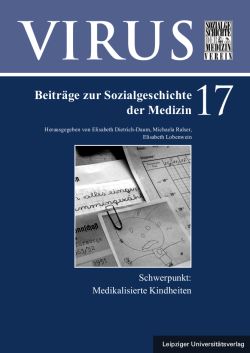
VIRUS Band 17, pp. 241-255, 2020/07/21
Schwerpunkt: Medikalisierte Kindheiten
Die neue Sorge um
das Kind vom ausgehenden 19. bis ins späte 20. Jahrhundert

The article presents one aspect of the ongoing dissertation project, “The Construction and Practices of ‘Wayfaring’ during the 19th and 20th century” (working title). A general overview of the project is followed by a discussion of the expert discourses on juvenile “waywardness” and “vagrancy“ that had been developed at the turn of the century and that influenced theframing of deviant behavior of children and adolescents throughout the 20th century. Thecorpus of source material consists mainly of contributions of German-speaking authors in scientific and philanthropic journals, encyclopedias, manuals or other publications. Within this discourse, the “runaway tendency” became a cornerstone of the concept of “waywardness”. The paper shows how medical and pedagogic arguments got intertwined and shaped themeasures taken up to contain and prevent juvenile “vagrancy”.
Keywords: Europe, Austria, Germany, 20th century, welfare, youth, children, vagabond, tramp, waywardness